Developer to Save Funk Zone
Can Eco-Groovy Neil Dipaola Build and Not Gentrify?
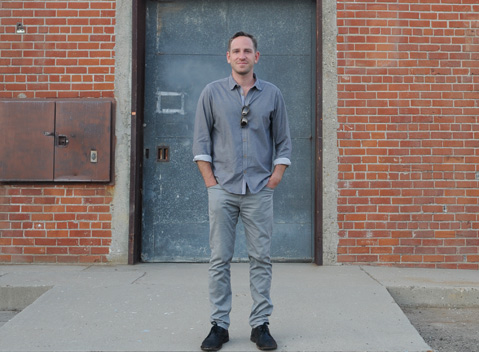
At first blush, it might seem counterintuitive if not outright self-serving. Developer Neil Dipaola says he wants to keep the “funk” in the Funk Zone. How? By building a four-story mixed-use development with a new rooftop hotel, bar, and swimming pool. This is funky? It’s easily the biggest proposal to hit the city’s industrialized waterfront neighborhood in 20 years. But it’s not the mere size that amazes. It’s the ingredients. The most striking being the roofline, which is audaciously original and whimsical beyond anything city planners had ever seen. Instead of traditional hotel rooms, Dipaola has proposed that guests stay in sailboats — real ones — installed on the top floor, along with Airstream trailers and industrial storage containers.
Sailboats on Rooftops?
Neil Dipaola is definitely Santa Barbara’s next new big thing.
Dipaola (pronounced dee·powla) first gained notice several years ago, winning approval from California’s notoriously protective Coastal Commission to build the biggest, flashiest, and most environmentally innovative private mixed-use development in Isla Vista history. Then, Dipaola and his partners, Matthew and Wally Hofmann, installed the first Airstream hotel in downtown Santa Barbara, locating five shimmering aluminum retro-chic coaches at the front of the historic Santa Barbara Autocamp mobile-home park on upper De la Vina Street. Impressively, they did so without evicting any of the tenants — many elderly, blue collar, and on fixed incomes. It’s been a huge success. Today, that same partnership, Autocamp, is poised to airlift many more Airstream hotel rooms onto underutilized parking garage rooftops in Los Angeles and San Francisco and to launch what’s been billed as “the world’s largest Airstream hotel” in a sleazy section of downtown Las Vegas long dominated by meth heads and crack houses.
When otherwise not occupied, Dipaola surfs, scuba dives, flies helicopters, skis, and runs 36-mile marathons along back-country trails linking Goleta and Montecito. He sits on the boards of the Environmental Defense Center and the Community Environmental Council, and helps direct a private family foundation — started when his two older brothers sold their online advertising company — that doles out about $5 million a year.
This past year, Dipaola turned 30.
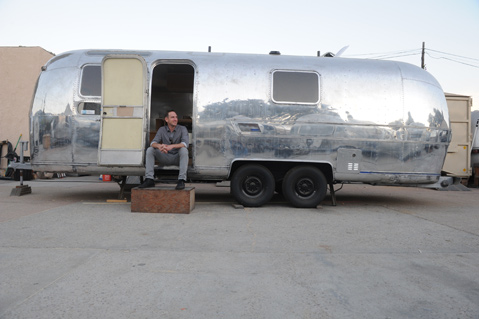
Creative Collisions
In person, there’s nothing remotely wild-eyed about Dipaola. He’s thoughtful and focused. His smile is soft and careful. He works out of an expansive, uncluttered penthouse located on State Street above the city attorney’s offices, with a fine view of Santa Barbara’s quintessentially red-tiled City Hall.
On his office’s white walls is a flow chart, scrawled in red Magic Marker, detailing Dipaola’s expanding business ventures. Below are three boxes — also drawn in red — outlining his essential ingredients for success: Skill, Experience, and Luck. The trick, Dipaola explained, is to reduce luck, even though it can never be completely erased. That hasn’t stopped him, however, from trying.
In conversation, Dipaola speaks with the zeal of a hipster evangelist, preaching the twin gospels of youthful entrepreneurialism and smart-growth urban design. He’s all about the greenest building technology possible, getting people out of their cars, and redefining the American dream to include something other than the single-family home with a two-car garage. Smaller units, he said, “can be sexy, sustainable, and affordable.” The term “authentic” pops up frequently — likewise, his notion of “creating collisions,” defined as public spaces engineered to allow people to accidentally bump into each other with enough frequency to spawn a sense of community. State Street is undeniably gorgeous, Dipaola noted. But there aren’t nearly enough collisions.
Where people still do collide, Dipaola believes, is in the Funk Zone, the city’s much-heralded former industrial no-man’s land close to the Pacific Ocean. Over the last five years or so, it’s been transformed into an anarchistic hodgepodge of artists’ workshops, wine bars, and fancy restaurants. Dipaola is hardly the first developer to be entranced by this neighborhood. Brian Kelly, a visionary real estate flipper, recently made several fortunes by investing in Funk Zone properties, installing restaurants such as the now very hot Lark, and then selling. But with these changes, many artists, craftspeople, and other rough-around-the-edges characters have been forced out. Jim O’Mahoney, who has operated a surf museum there for 32 years, long before the name Funk Zone was ever coined, has philosophically concluded that all good things must end. “We’re front-row center to the beach,” he said, “and there are 19 cruise ships scheduled to start landing next month. What else do you expect?”
Against this lucratively grim inevitability, Dipaola claims that he can keep the Funk Zone “funky,” with his four-story Rubik’s Cube development of mixed-uses on a 1.7-acre parcel of land — the site of the former Weber’s Bread bakery — with its epicenter at Gray Avenue and Mason Street.
Here’s how.
For starters, Dipaola is proposing to build 64 new rental housing units — not condominiums, rental units. That’s big. Of those, 10 would be designated as “affordable” — admittedly for households earning up to $55,000 a year. That could bring middle-class people into the neighborhood. The number of private developers building rental property in Santa Barbara can still be counted on one hand. City planners are optimistic new development guidelines recently approved will spur more — highlighting the 89-unit project now going up on outer State Street. But the jury remains out. Sixty-four rental units in today’s zero-vacancy-rate housing climate is clearly Dipaola’s ace in the hole with city planners.
Secondly, Dipaola is promising a secure home for Santa Barbara’s “creatives” scrambling to maintain a toehold in Santa Barbara’s high-priced market. In preliminary plans, Dipaola indicated he’s setting aside 12,000 square feet of space for artists, surfboard shapers, and assorted craftspeople. Of that, one-quarter would be dedicated to a shared communal studio — replete with welding equipment, a potter’s wheel, and whatever else is deemed essential to the messy slop of artistic creation. The remaining space would be diced into affordable cubbyholes for studio, gallery, or retail purposes.
As these plans, which include a restaurant and 25,000 square feet of retail shops, wend through the city’s painstaking design-review process, Dipaola has also proposed locating a temporary — three- to four-year — Funk Zone Artist Village on the site, customizing 12 industrial shipping containers into artist work spaces with windows, skylights, and electrical outlets. An Airstream with kitchen facilities would be installed to sell food. As part of Dipaola’s ongoing conspiracy to create collisional space, the artists would be required to open their studios to the public at least six times a year.
This second proposal is so off the grid that no city regulations applied. Initially, Dipaola proceeded as if he didn’t need to get permits. This tweaked city planners, who insisted that he do so. It remains uncertain if these details can be hammered out. The container shells might have to be not only elevated for flood protection but also strapped down in case of earthquakes — the installation date has been set back several months.
Visually, what sets his long-term development apart is his aesthetic enthusiasm for urban-industrial grit — no white stucco or red tile anywhere. Rather than scraping the buildings now on the site, Dipaola proposed keeping many of the structures, most notably the Weber’s Bread grain silo, onto which he hopes late-night movies could one day be screened. “This isn’t State Street. This isn’t El Pueblo Viejo. This is the Funk Zone,” he said. “It’s gritty. It’s different. It’s where the spirit of Solstice lives.”
But as charmed as many in City Hall have been, Dipaola faces major challenges. He’s asking to build a 30- to 40-room hotel on land that is zoned Ocean-Commercial, which does not allow for hotels. And he’s asking to build a four-story development where city zoning allows for only three. And he’s asking to provide less than half the parking spaces than existing zones requires. Anyone else would be dead in the water. But Neil Dipaola isn’t anyone else.
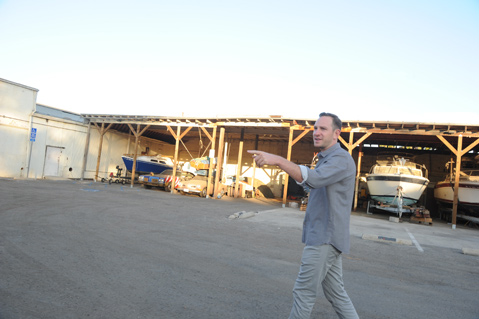
Raising Up
Dipaola grew up the youngest of three boys in what he described as a “solidly lower middle class” household in the San Fernando Valley community of Woodland Hills. His father, Phil, started work with GTE. His first job, according to Neil, was scooping change out of the phone machines. From there, he moved up the food chain. His mother was a hard-charging, bargain-hunting coupon clipper with an unfailing bullshit meter. It was a household of expectations, limits, and support.
His father was the son of Italian immigrants. His own mother grew up in Cleveland; his father, near Pittsburgh. Phil — the first in his family to graduate from high school — served in Vietnam, where he made extra money cutting hair. After the war, Phil attended community college, eventually graduating from USC. He had an entrepreneurial bent that he sought to pass on to his children.
The elder Dipaola said he retired “early” from the phone company — if 25 years is early — and started a gourmet coffee roasting company. After eight years, he sold that. Then, at age 59, he decided he wanted to get a marriage family therapy license. He did that, too.
Neil, according to his father, never lacked for motivation; he knew what he wanted to do and did it. At 14, Neil got a job working for the YMCA as a camp counselor trainee. He became one of the youngest California State Beach lifeguards, at the age of 16. In high school, Dipaola played water polo and had the lead role in the production of The Music Man. During his senior year, he ran for class president and won. “If he ever got into trouble, I didn’t hear about it,” said his father.
Dipaola’s older brothers both attended UC Berkeley. One was a business whiz; the other, a math freak. They would later start what became one of the fastest-growing businesses in Southern California — Vantage Media — out of the family’s garage. They sold in 2007, reportedly for $100 million.
Neil Dipaola — an avid surfer — attended UCSB instead of Berkeley. “I got as far north as Campus Point,” he said. “And that was that.” Dipaola majored in environmental studies, intending to become an environmental lawyer.
During his college years, Dipaola experienced what he called an ah-ha moment. “I was into environmental studies, and I wanted all the developers off the coast,” he recounted. “And then I thought, ‘What if I’m one of those people, and I can do it right? Maybe I can create a mind shift in the industry.’”
Dipaola decided the man to teach him how was Michael Towbes, the most successful, iconic developer in Santa Barbara. “I didn’t exactly stalk him,” Dipaola said, “but close.” By the time he graduated in 2004, he had gotten an introduction, and after an hour’s meeting in Towbes’s office, Dipaola got an internship. This eventually morphed into a job as an assistant project manager for Towbes’s executive Craig Zimmerman.
At that time, the Towbes machine was not as up to date on green building and environmental sustainability as it is now. Clients liked the idea, Zimmerman said, but they didn’t want to pay extra for it. Dipaola knew about state and federal government programs that would reduce their financial impact. “A lot of people have great vision, and certainly Neil has that,” said Zimmerman. “But what sets him apart is his force of will to make things happen.”
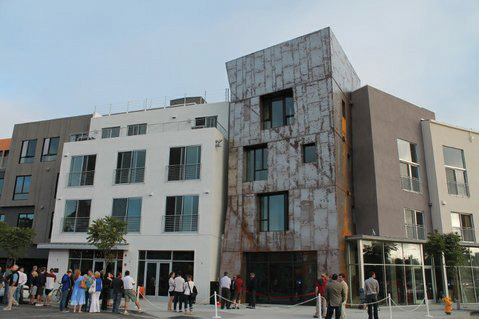
Trailblazing Green
Around the time he turned 24, Dipaola learned that an environmentally challenged plot of land in Isla Vista’s “Loop” was selling for $2.3 million. It had been the site of a gas station, a bike shop, and a car repair shop. Isla Vista’s then Redevelopment Agency wanted new housing and anything that might stimulate economic activity in I.V. The agency provided Dipaola with a $1.5 million loan, and he committed that five of the rental units would be designated as “affordable” housing.
Partnering with the Lawrence Berkeley National Laboratory, Dipaola came up with environmental options that made the development the most innovative green machine on the coast — eventually winning recognition by Governor Jerry Brown.
But first, Dipaola had to get his plans approved. And they were a handful.
Where existing zoning allowed a maximum height of 35 feet, Dipaola proposed 50. Where existing zoning required 99 parking spaces, Dipaola proposed 24. Where Isla Vista’s architectural palette is notoriously sun-bleached, the color scheme Dipaola proposed was colorful, modern, and slightly goofy. Some people hated it. It was so not I.V., they sputtered. But while some individuals spoke out against the project, there was no organized opposition. According to the planners involved, Dipaola simply out-hustled them. The initial ease with which Dipaola proceeded was unheard of in living memory. He first submitted plans in June 2008, and the project was approved by December. The County Planning Commission voted unanimously in favor.
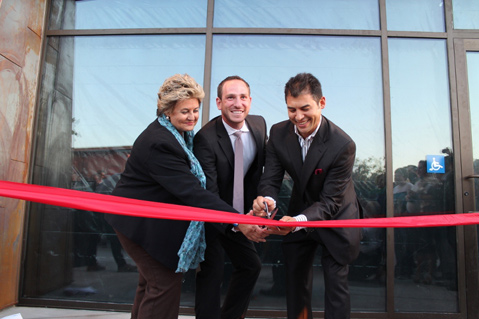
But 10 days after securing approval, Dipaola was notified that two of the most respected members of the California Coastal Commission, Sara Wan and Mary Shallenberger, had appealed his project. That’s enough for any developer to grab a giant bag of adult diapers. Wan, in particular, enjoyed a reputation for fearless, uncompromising cantankerousness.
Dipaola’s reaction?
He freaked out, held a short-lived pity-party, and went back to work. “I’ve got to get to know these people,” he remembers thinking
Dipaola knew that Wan was a UCSB guest lecturer, so he got permission to audit the class. Wan knew a developer was taking her class. Six weeks in, he asked for an office meeting, where he showed her his plans. As he tells it, Wan loved them but said his project had some problems. He listened. When he submitted new plans, they reflected that he’d been paying attention. “I was impressed,” said Wan. “Instead of hiring some high-priced lobbyist to try to cram something down our throat, he actually listened.” The changes were operational in nature. Among other things, Dipaola installed car shares at the LOOP, allowing students to rent cars for as little as $10 an hour. The LOOP would be the first development in the county to offer car-sharing.
Not only did Wan and Shallenberger drop their appeals, but Wan actually showed up at the ground-breaking ceremony to speak on Dipaola’s behalf. “We’re not friends,” Wan explained, “but there’s this notion that environmental protection and development are somehow incompatible. When a developer comes along and does the right thing, well, he should be praised.”
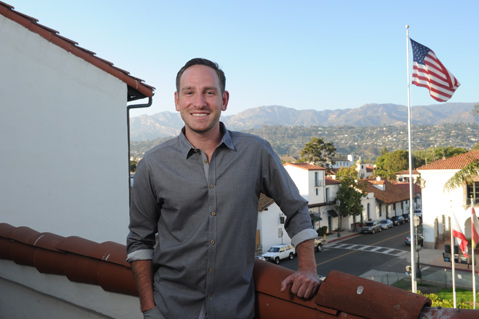
Dipaola Has Arrived
Dipaola sold the LOOP last year for $30 million, making him a desirable commodity in Santa Barbara: a young man with big ideas, an appetite for experimentation, and more than enough resources to back up both. Accordingly, Dipaola has been gathered into the bosom of Santa Barbara society. For several years now, Dipaola has been a Fiesta sponsor; he and his family ride in the parade — in a carriage. He’s been invited to activities hosted by the Rancheros Visitadores, though not as yet to their fabled wild rides. On the flip side, Geoff Green of the Fund for Santa Barbara, whose judgment functions as the North Star for the progressive community, is a fan. “I like his style,” said Green. At the Environmental Defense Center (EDC), Dipaola has brought not just dollars but other young-minded energetic donors with environmental ideals. That he tends to bid the highest at EDC auctions doesn’t hurt, either.
State Assemblymember Das Williams counts Dipaola as a personal friend, not just a political benefactor. Dipaola has hosted a handful of fundraisers for him, but the two surf together, hunt lobsters together, and volunteer with Social Venture Partners, an organization of accomplished individuals who mentor nonprofit organizations.
Around City Hall, Dipaola has definitely made his presence felt. Officials are undeniably impressed and intrigued, but they’re also wary. The first public hearing took place this April in front of the Architectural Board of Review (ABR). Dipaola had only just recently purchased the property. One of the first speakers to testify at the hearing on his behalf was Darcel Elliott, administrative assistant to Das Williams. At the second public unveiling — before the Planning Commission on July 10 — another Williams assistant, Annette Hurtado, also spoke on behalf of Dipaola’s plans. Mayor Helene Schneider, whose political relationship with Williams has grown complicated in recent years, remarked with a chuckle, “That’s new.”
Williams has disputed there’s anything unusual about such advocacy. He noted that in the past year, he or his staff has spoken more than 80 times to various local government agencies to express his views on various issues. “That’s what government officials do,” he said. Still, no one in City Hall’s land-use trenches can remember the last time a member of the State Legislature — or staff — weighed in on behalf of a specific project during a public hearing.
Perhaps more unprecedented was the glowing endorsement bestowed upon Dipaola and his plans by Ron Gallo, executive director of the Santa Barbara Foundation. For Santa Barbara’s vast sprawling network of nonprofits, the S.B. Foundation functions as a cross between the Federal Reserve and the Supreme Court. As Gallo acknowledged, he’d never attended an ABR meeting before, let alone ever spoken at one. He described Dipaola’s long-range plan as “catalytic development” and a “near-perfect use of the property” that would preserve the Funk Zone as “a cradle of artistic energy.” In a recent interview, Gallo explained that the foundation had made $75,000 in grants to various organizations dedicated to maintain the artistic integrity of the Funk Zone. More recently, the foundation had loaned Dipaola $350,000 to help underwrite the cost of the prefabricated storage containers for the Funk Zone Art Village. He acknowledged that the loan program was relatively new for the foundation — as was his speaking out — but that he intends to do more of both.

Talk Softly but Carry a Big Crowbar
Dipaola is submitting his plans under the provisions of a California law designed to encourage developers to build affordable housing by giving them greater densities than would otherwise be allowed. Critically, it also eliminates locally originated obstacles to such development, such as zoning laws. State law trumps city restrictions. Under existing zoning, for example, Dipaola could only build 27 housing units per acre on the site. But because Dipaola has pledged to set aside 10 affordable rental units, he can build up to 56 on the site.
But it goes way beyond that.
Under the state law, Dipaola is legally entitled to ask for — and to get — two major concessions, or incentives, from City Hall. And he gets to decide which two he wants. It’s the equivalent of getting to rub the genie bottle twice. In this case, Dipaola is seeking the right to build a hotel where zoning laws would otherwise not allow it. He’s also asking to provide far less parking than existing zoning would require. According to Dipaola’s math, without the hotel, he can’t afford to provide the below-market housing. And once the hotel is allowed, he reckons, the fourth floor will by necessity follow. As for the city parking requirements, he’s proposing to build enough parking racks for 230 bikes, to install the same robo-parking devices and car-sharing approach that he’d used at the LOOP, and to pay City Hall for the right to secure many of the parking spaces at the public parking lot at Garden Street and Cabrillo Boulevard, vastly underused.
The most enthusiastic of the planning commissioners was perhaps Deborah Schwartz, commenting, “It’s bold, it’s innovative, and it’s very exciting …. It’s the new paradigm for Santa Barbara.” Commissioner Bruce Bartlett was almost as enthusiastic, exhorting Dipaola to “get the junk out of the Funk Zone” while keeping the funk. More skeptical, but still open, was Planning Commissioner Michael Jordan, who wondered what protections Dipaola was proposing to ensure that artists wouldn’t be replaced by a Starbucks if his economic projections weren’t realized. In any case, he suggested the Funk Zone could soon be getting more “foo-foo.” Planning Commissioner Sheila Lodge, typically the most suspicious of smart-growth theorists, was the only one to come out against it. “It’s too much,” she stated. Regardless of planning ideology, Lodge — with more than 40 years of experience in City Hall under her belt — learned more than a thing or two about horse trading with developers. As she summed it up, Dipaola was offering City Hall 10 affordable rental units in exchange for 40 hotel rooms. That, she said, did not seem like “a bargain or a deal,” certainly not good enough, she added, “to roll over” for.
Lodge may have gotten the first part of the equation right, but legally, the Planning Commission has no authority to grant or withhold such concessions — that belongs exclusively to the head of the Community Development Department, George Buell. For Buell to say no, he will have to provide actual evidence that Dipaola does not, in fact, need the concessions to offset the losses he expects to incur by building the affordable rental units.
But perhaps the most passionate voices are the ones that stand to be most affected, positively or adversely: Santa Barbara’s art community. Even artists prone to be skeptical or jaded have testified in support of the arts village, as well as the permanent project. Ginny Brush, Santa Barbara County Arts Commission executive director, noted that it would be a mistake to conclude that the proliferation of wine bars have killed the Funk Zone. “Yes, there’s gentrification, and, yes, there are rent increases,” she argued. “But there’s also the recognition that artists and creatives bring an innovative energy to the area and that it’s worth preserving.” Or more acerbically, as longtime Santa Barbara artist Dan Levin put it, “If you want to build a zoo, you better have some animals.”
Editor’s Note: This story has been amended to reflect that the Funk Zone property is not currently zoned for hotels, and that the sum of its units-per-acre allowance and affordable units adds up to 56 total units.



